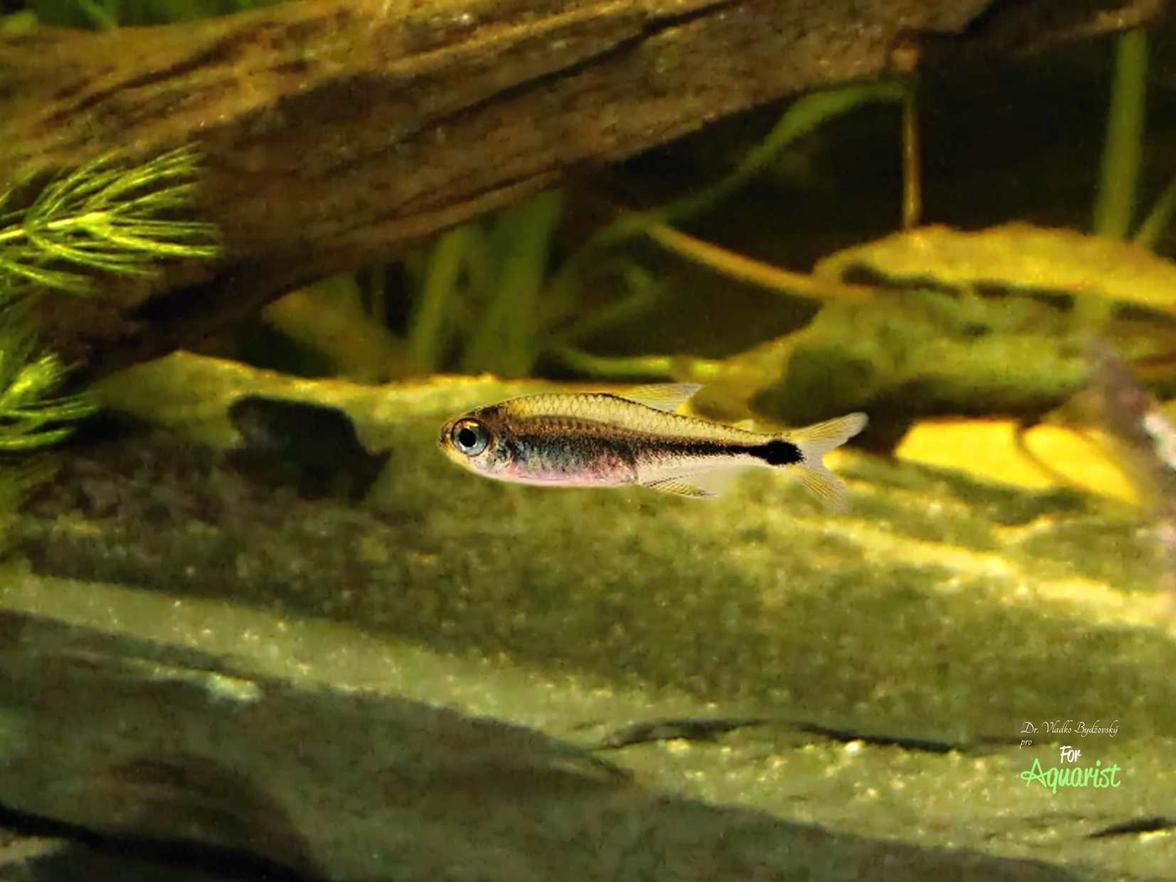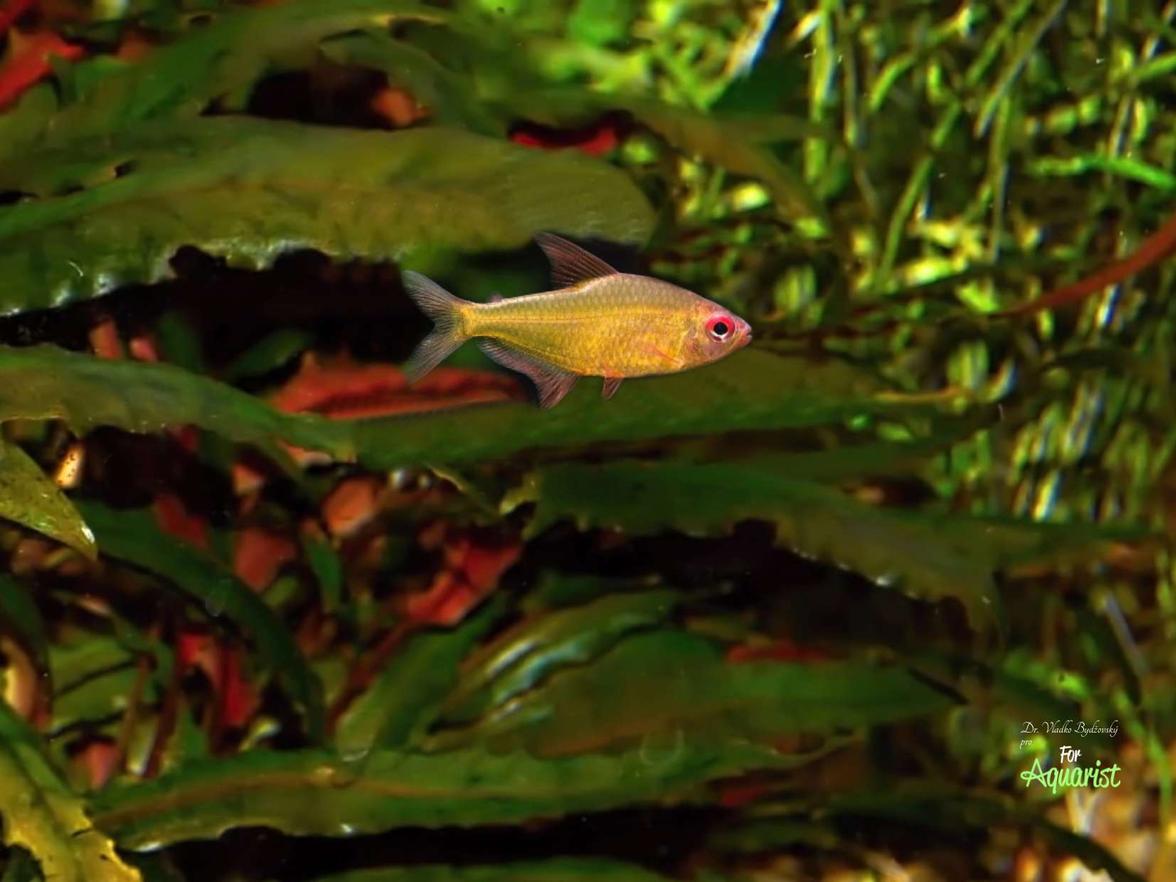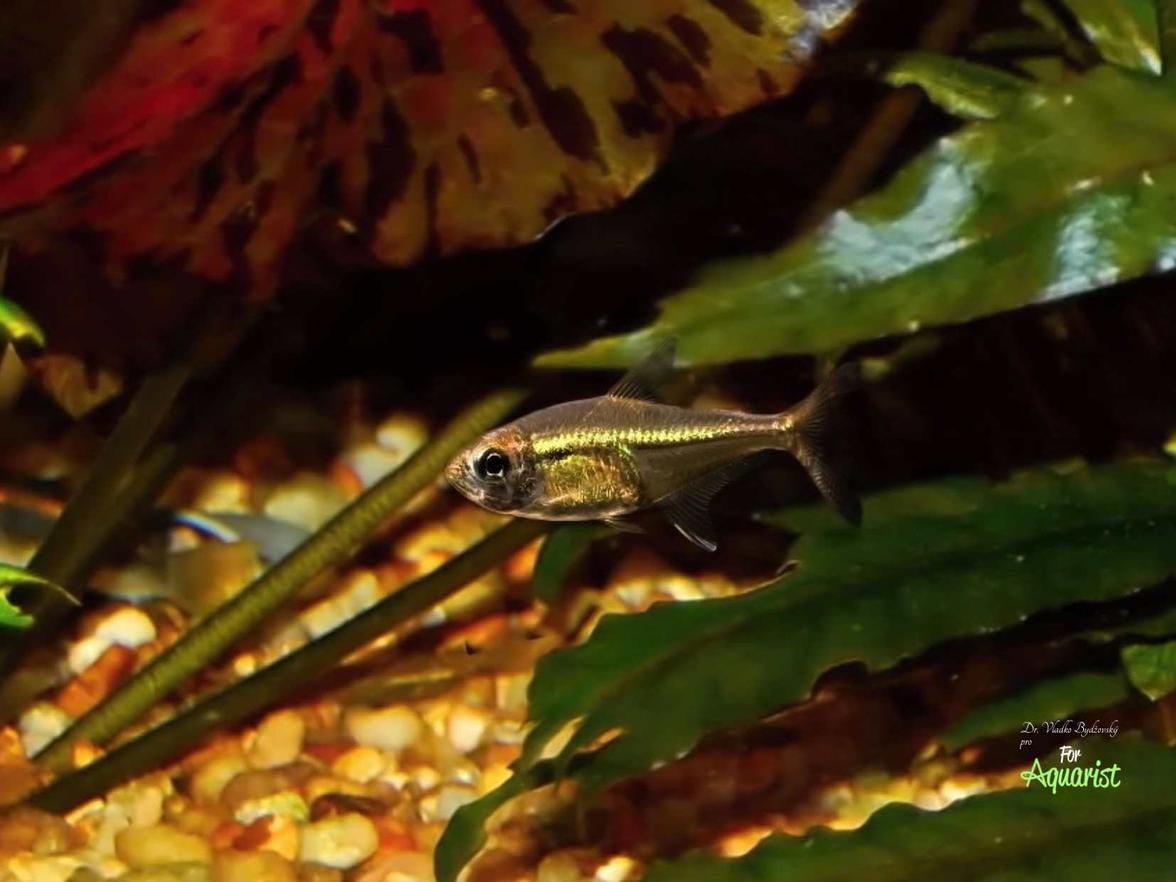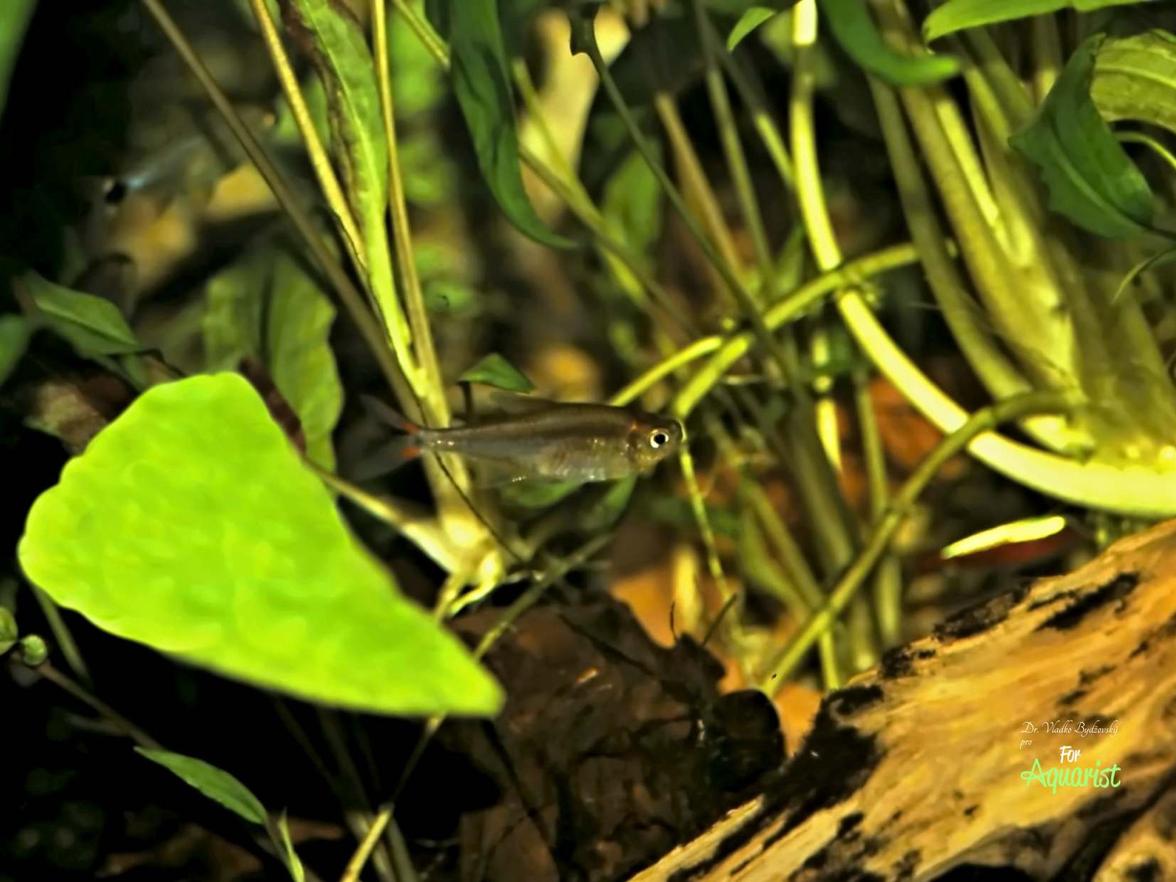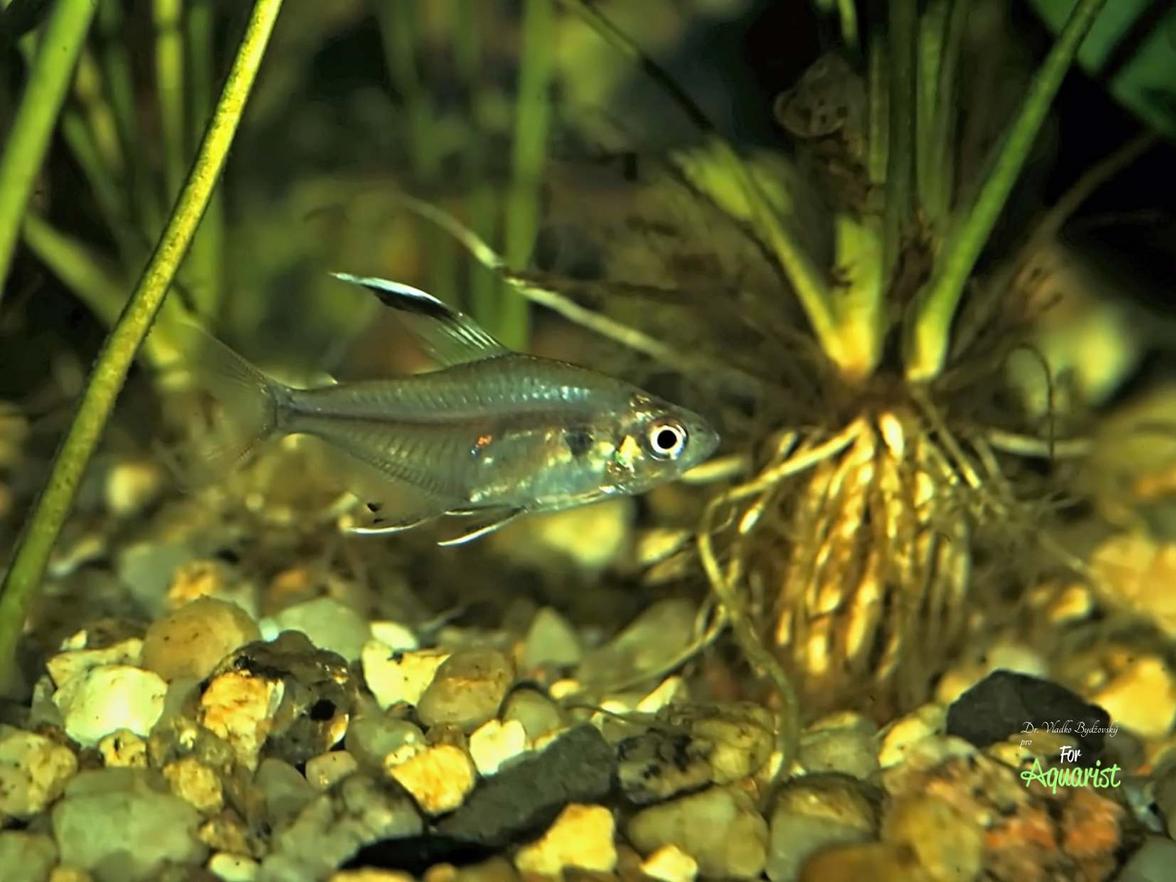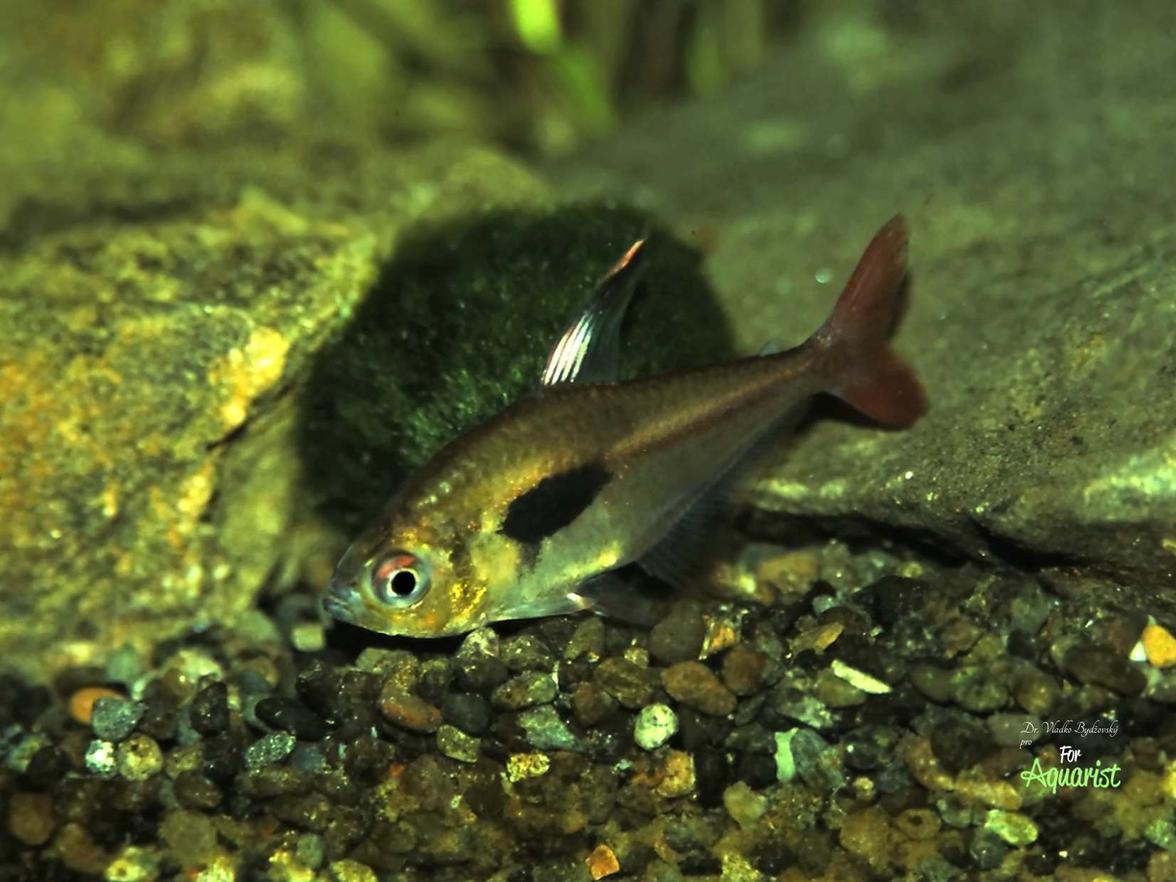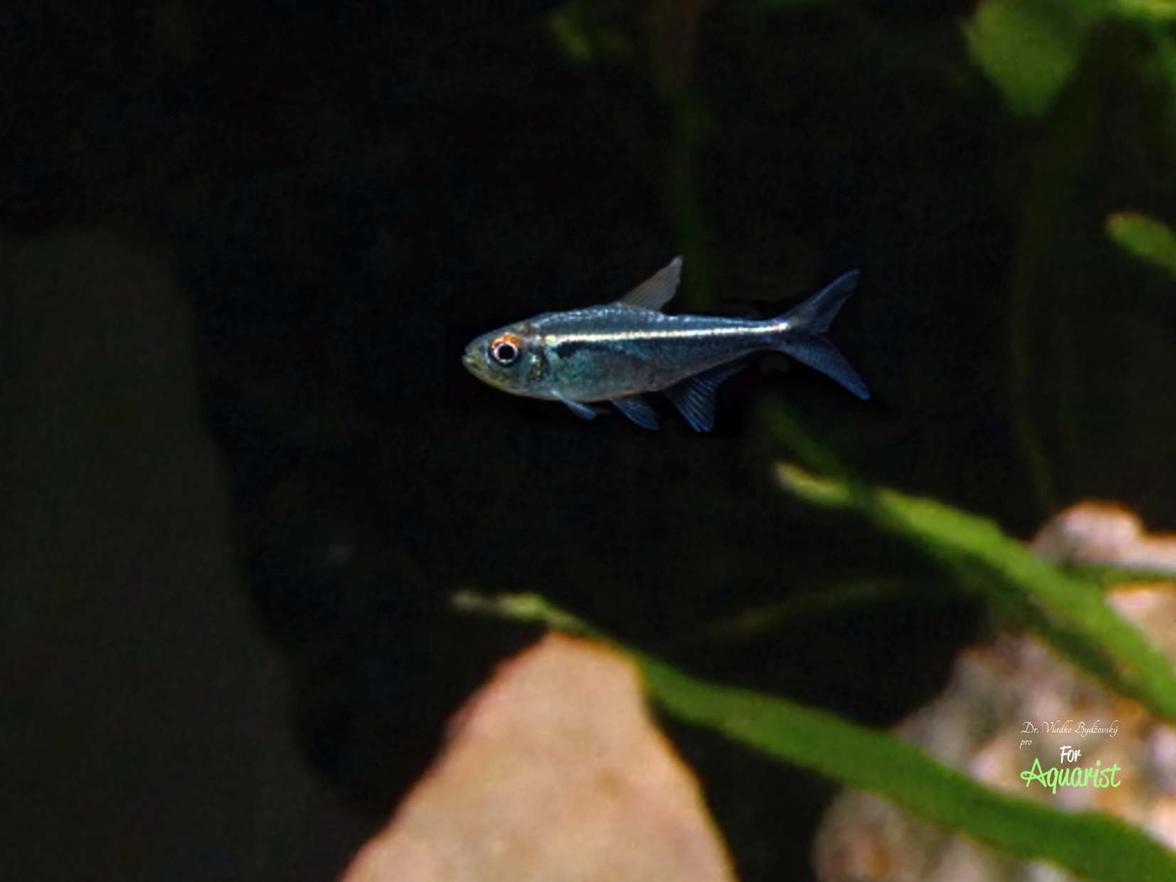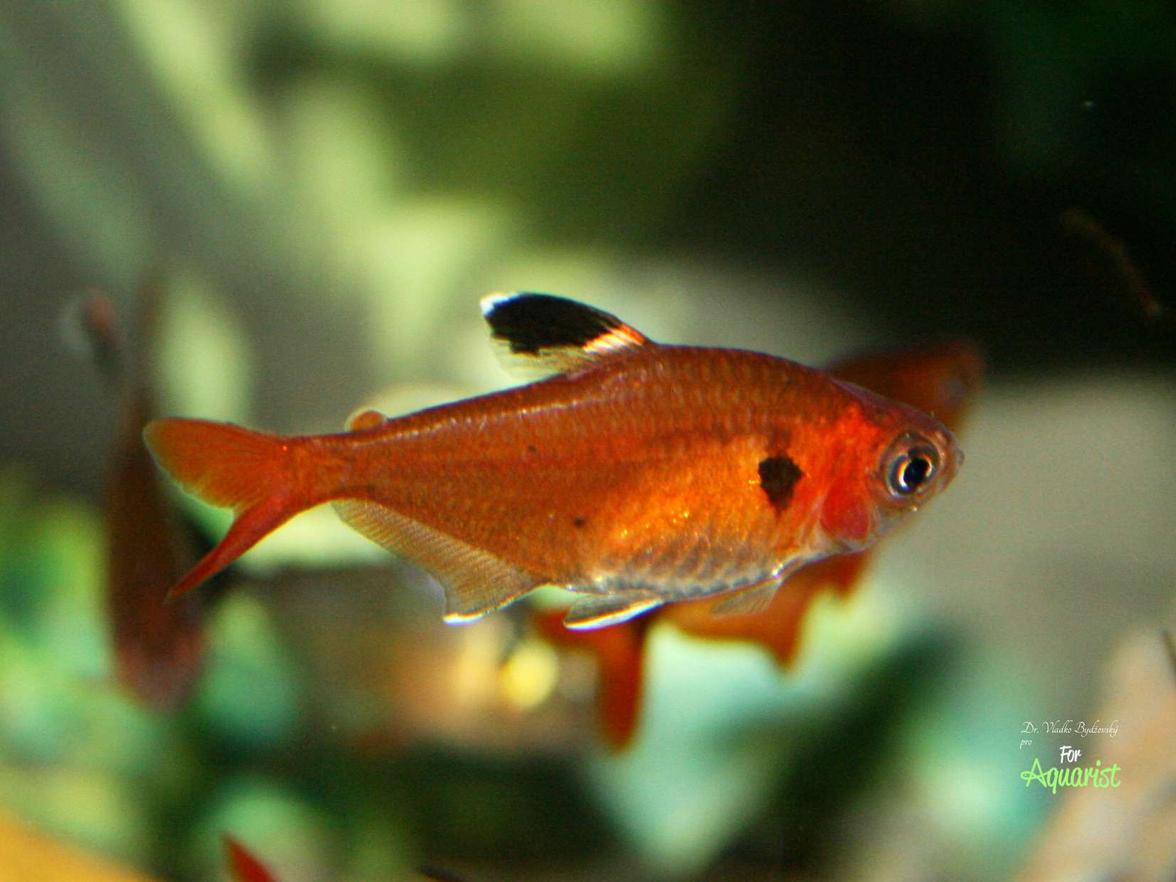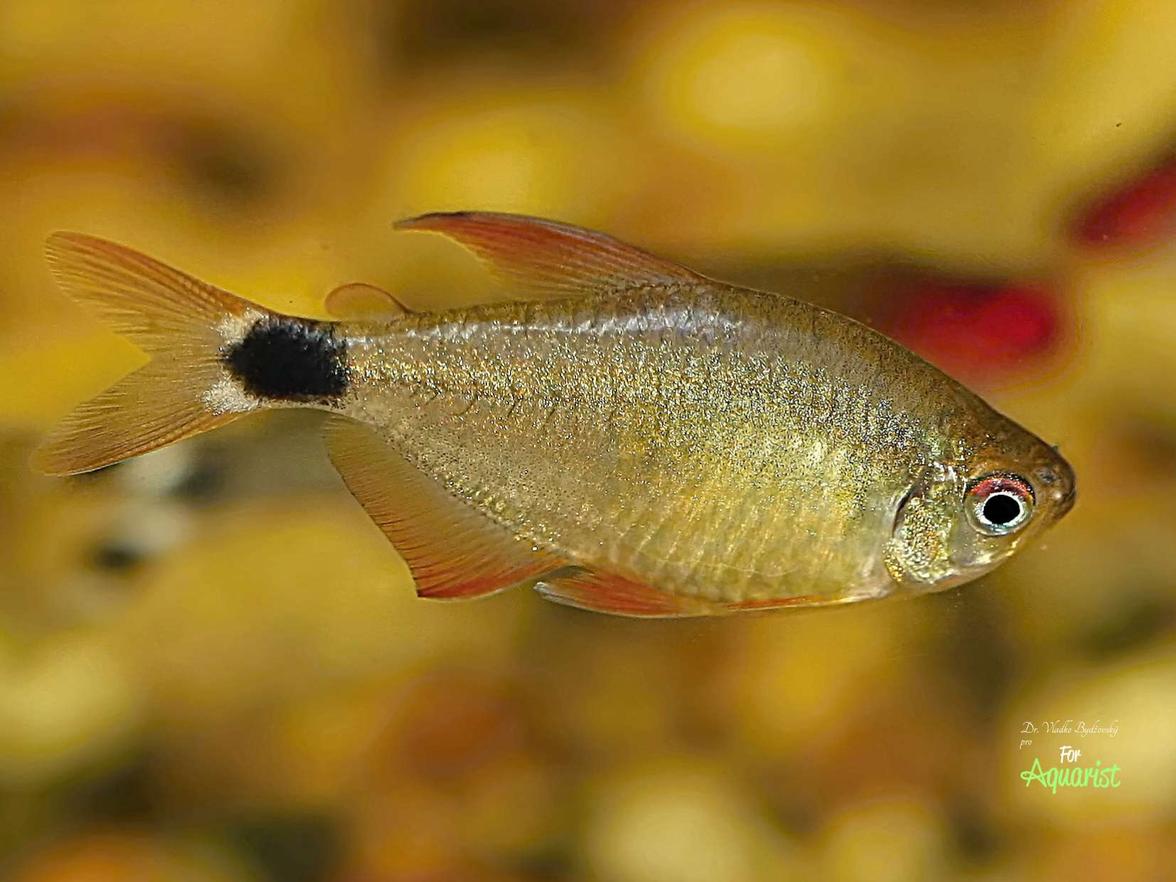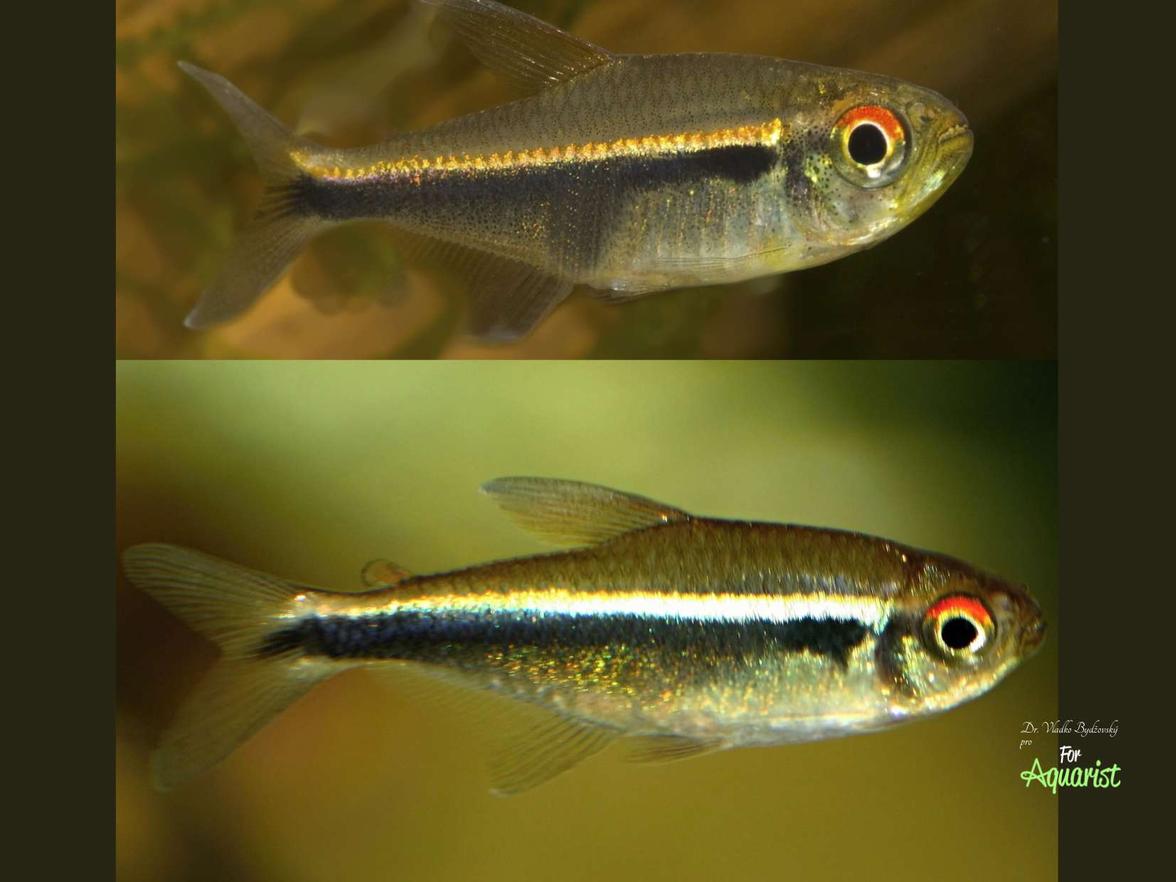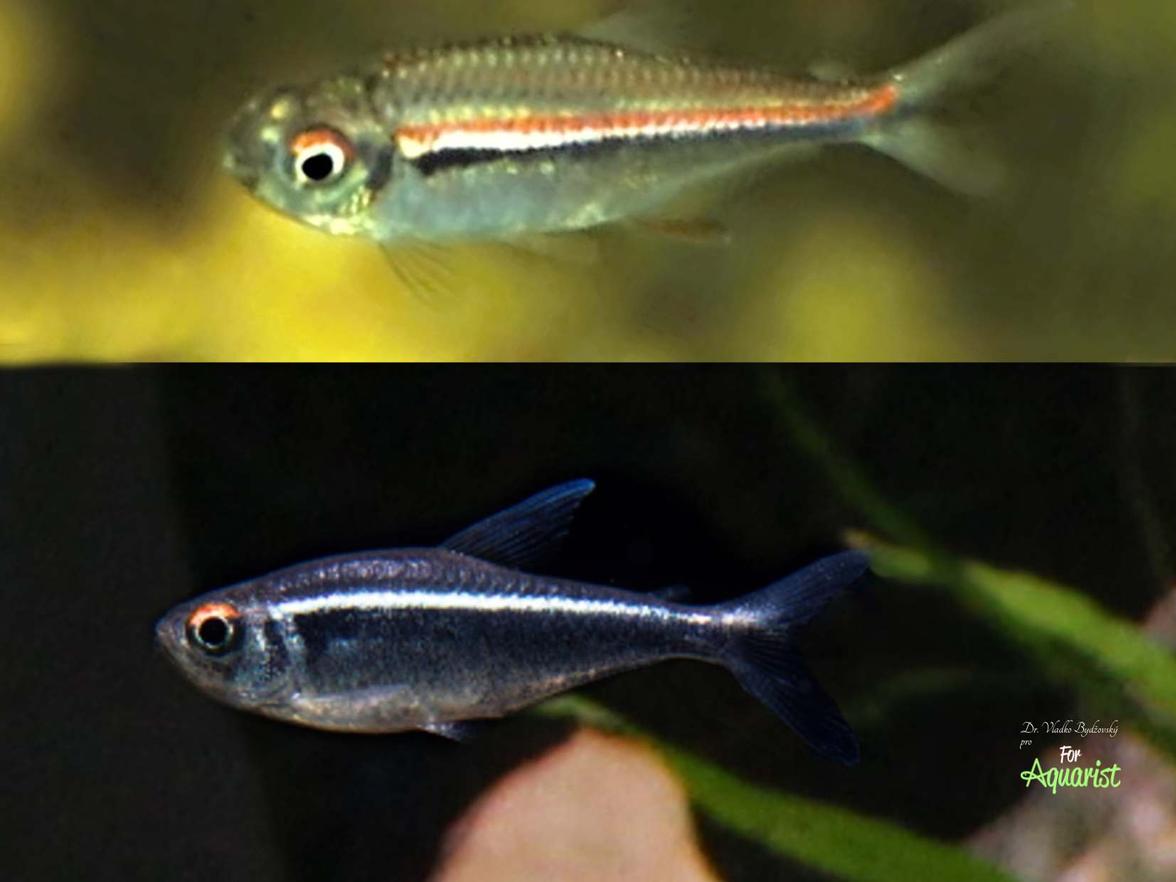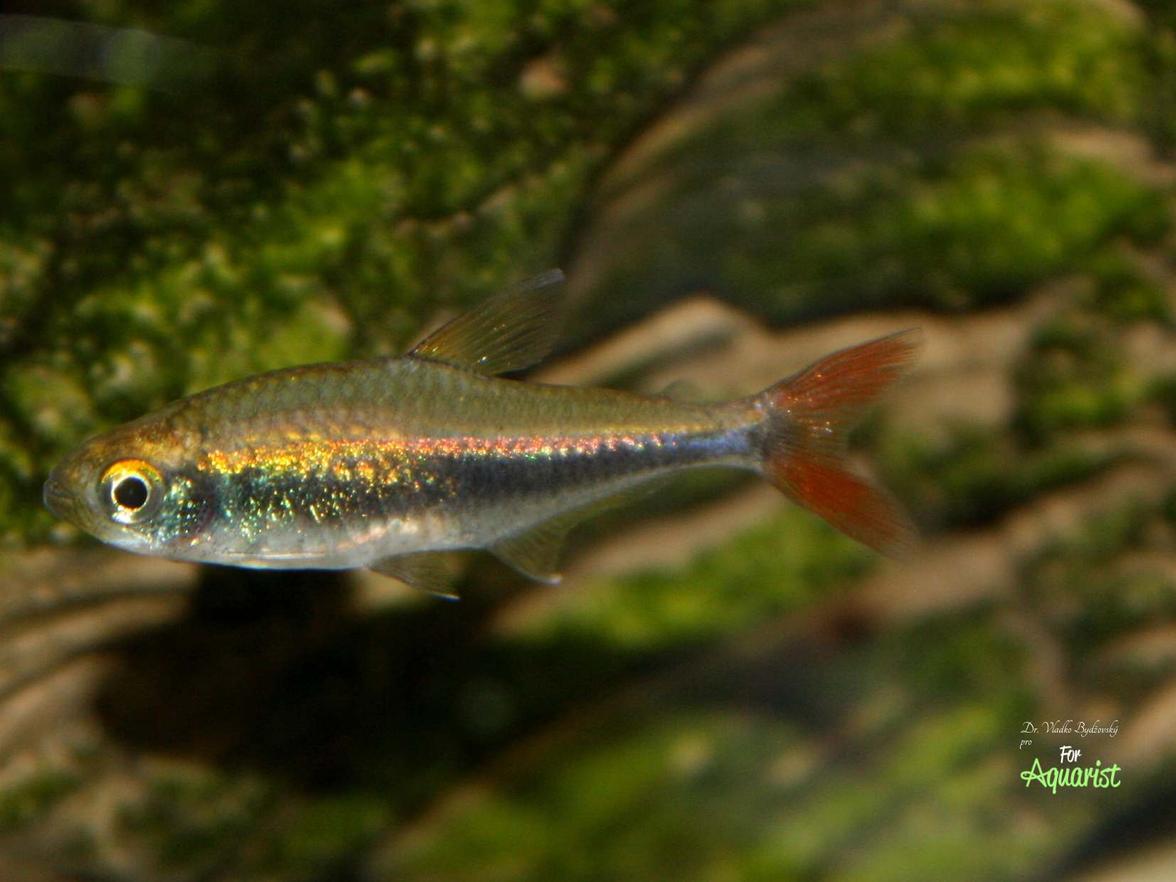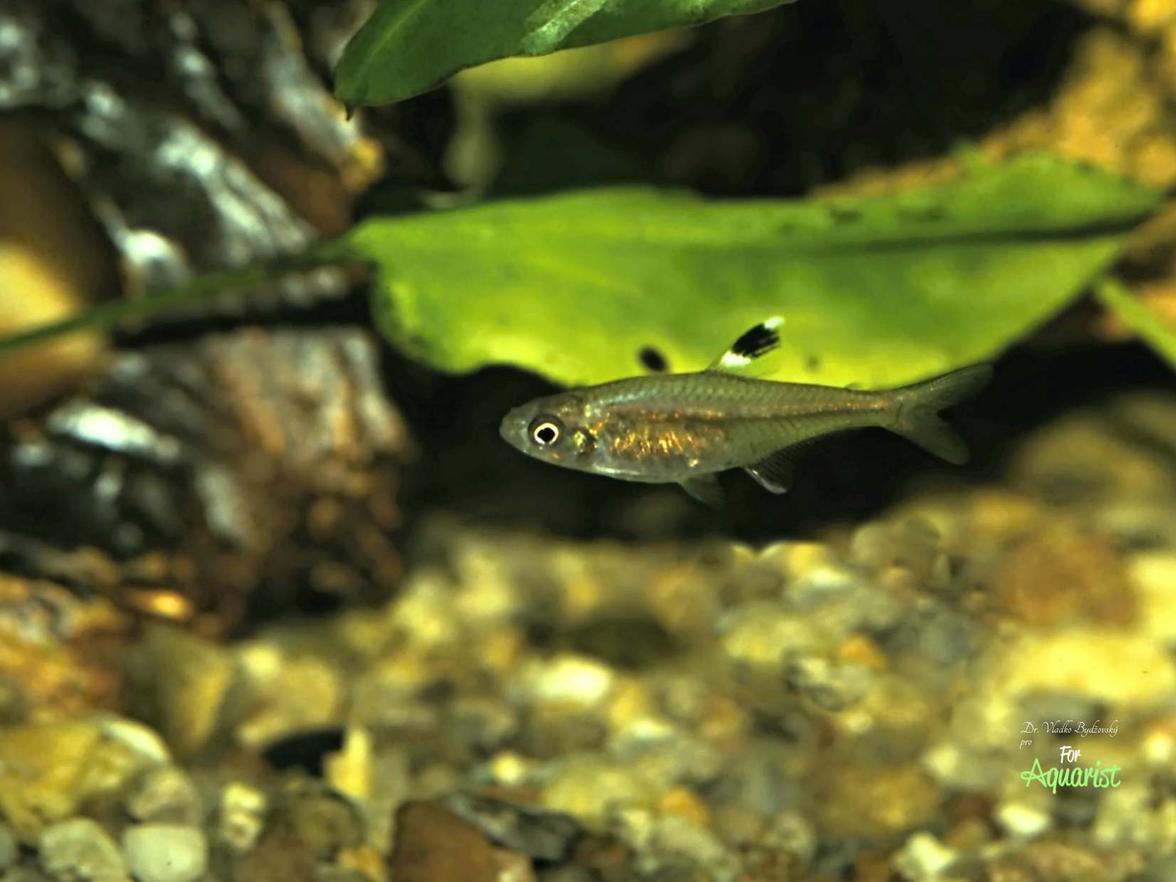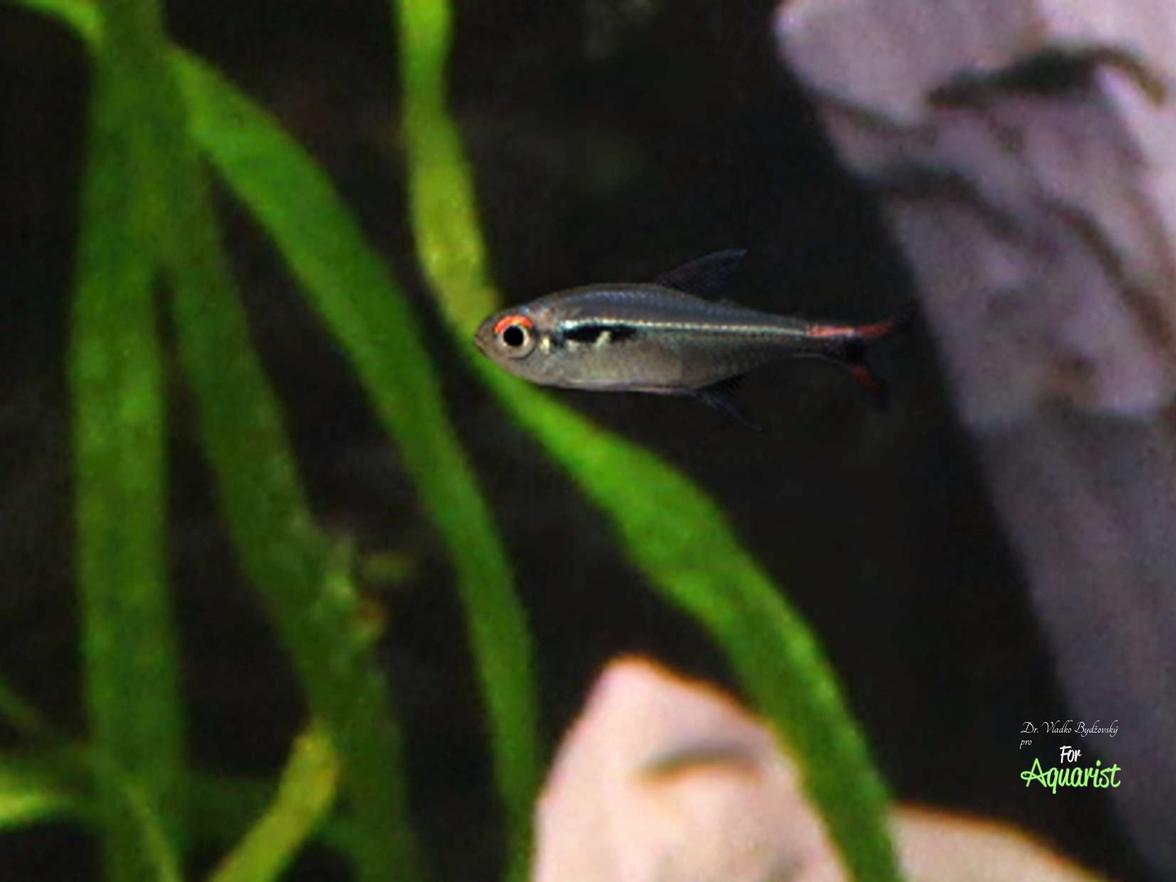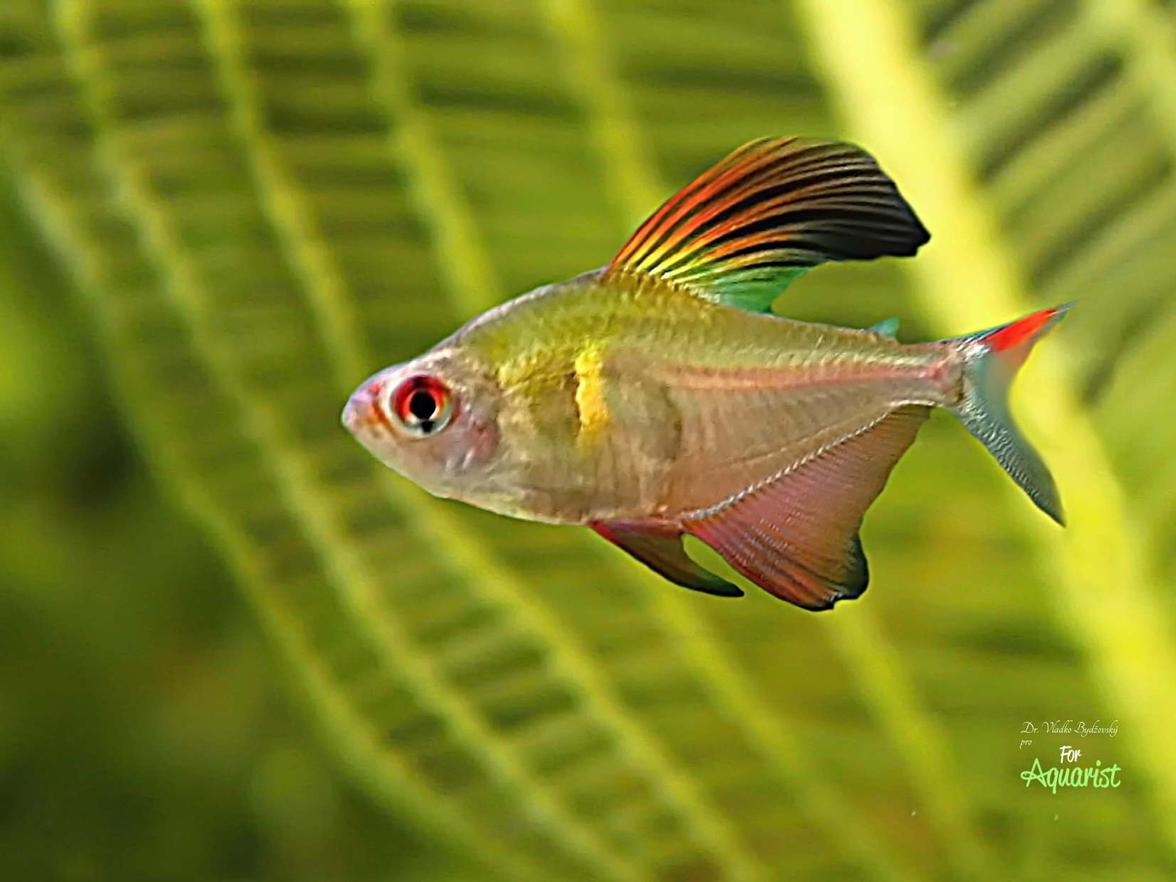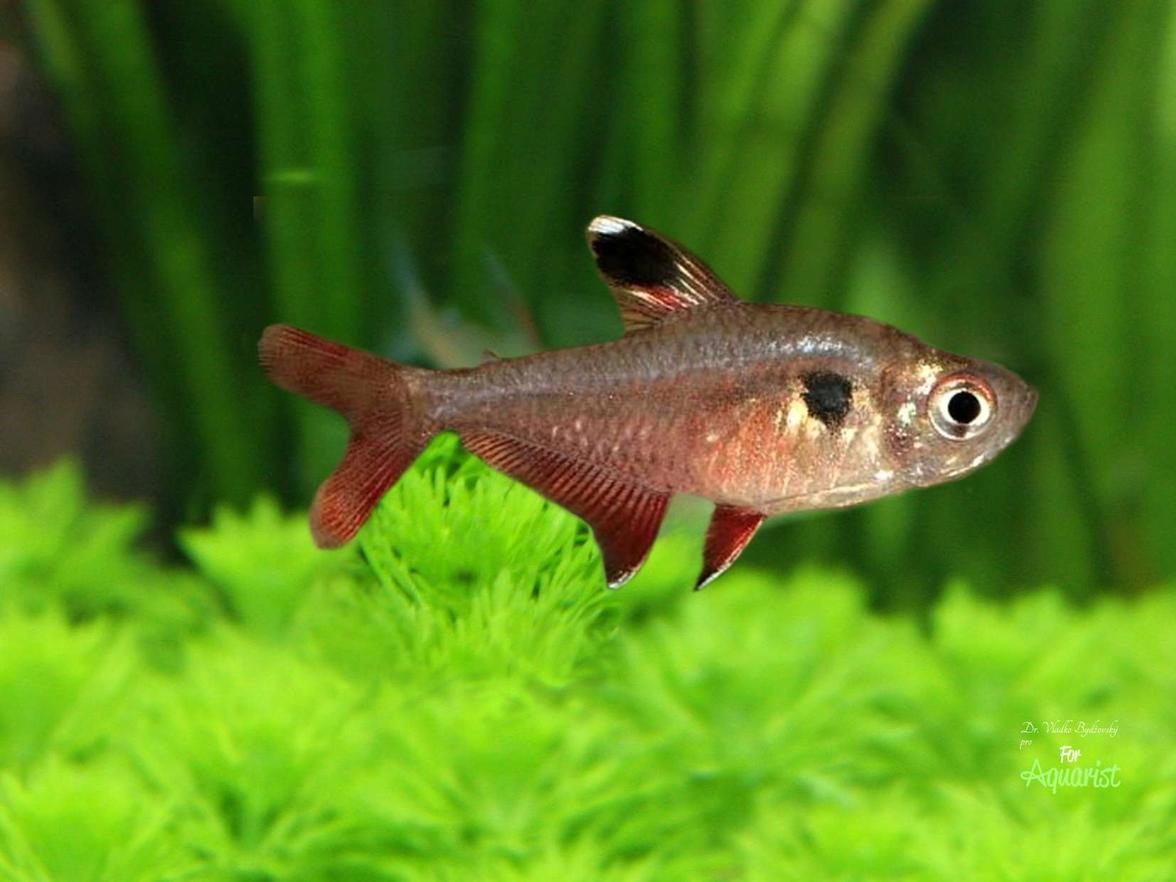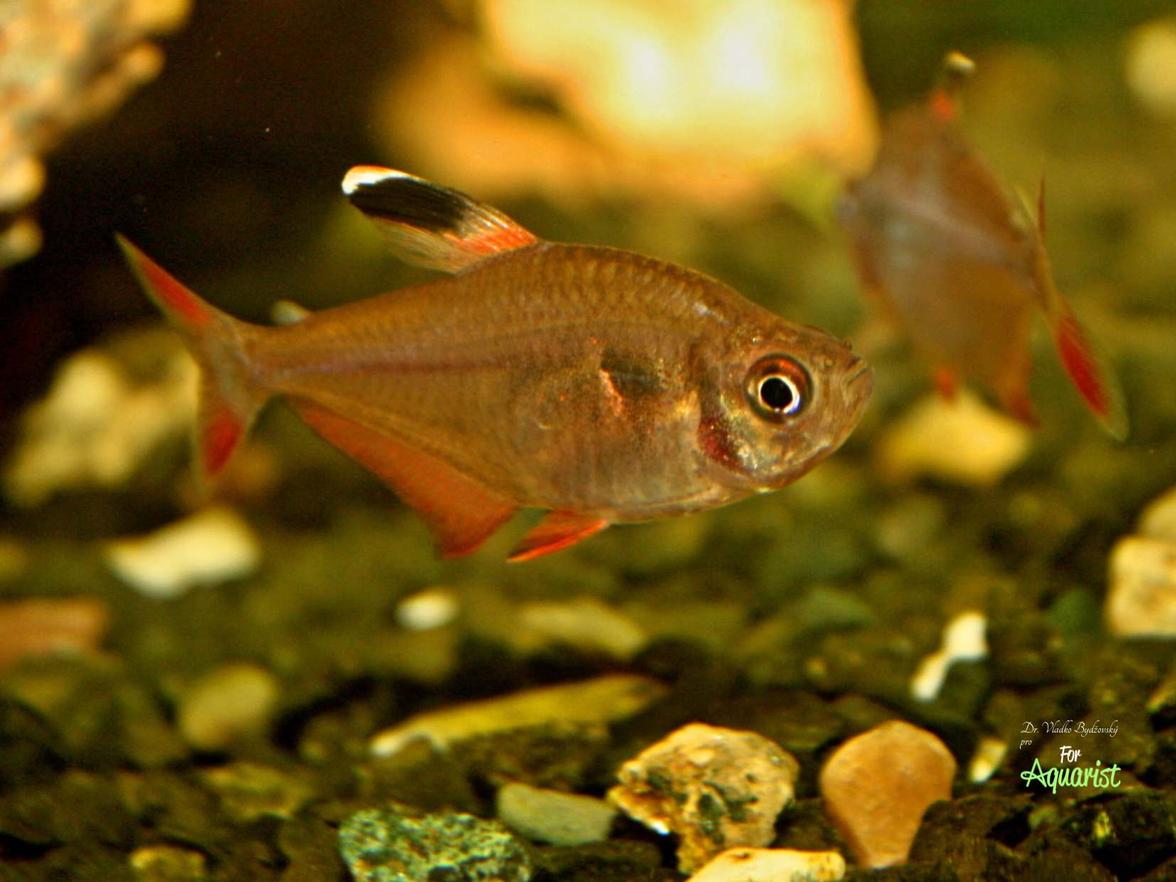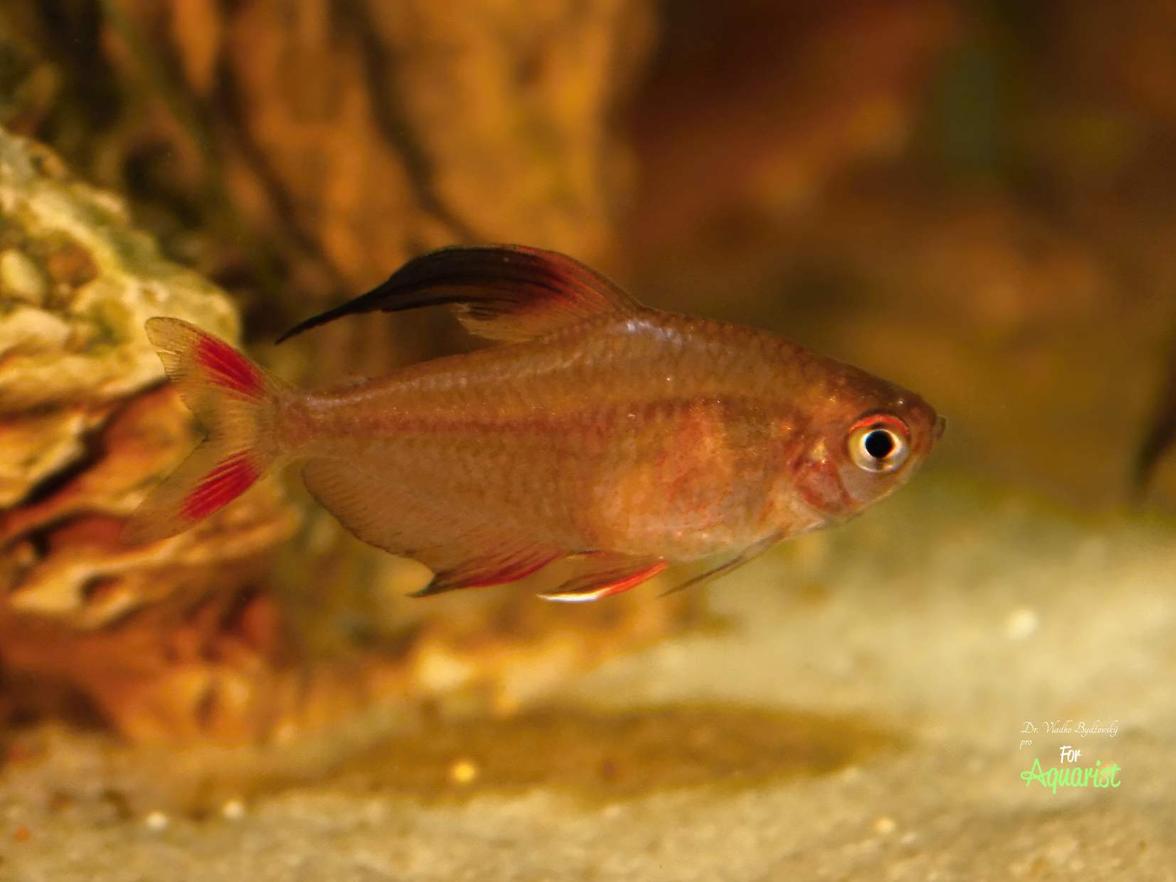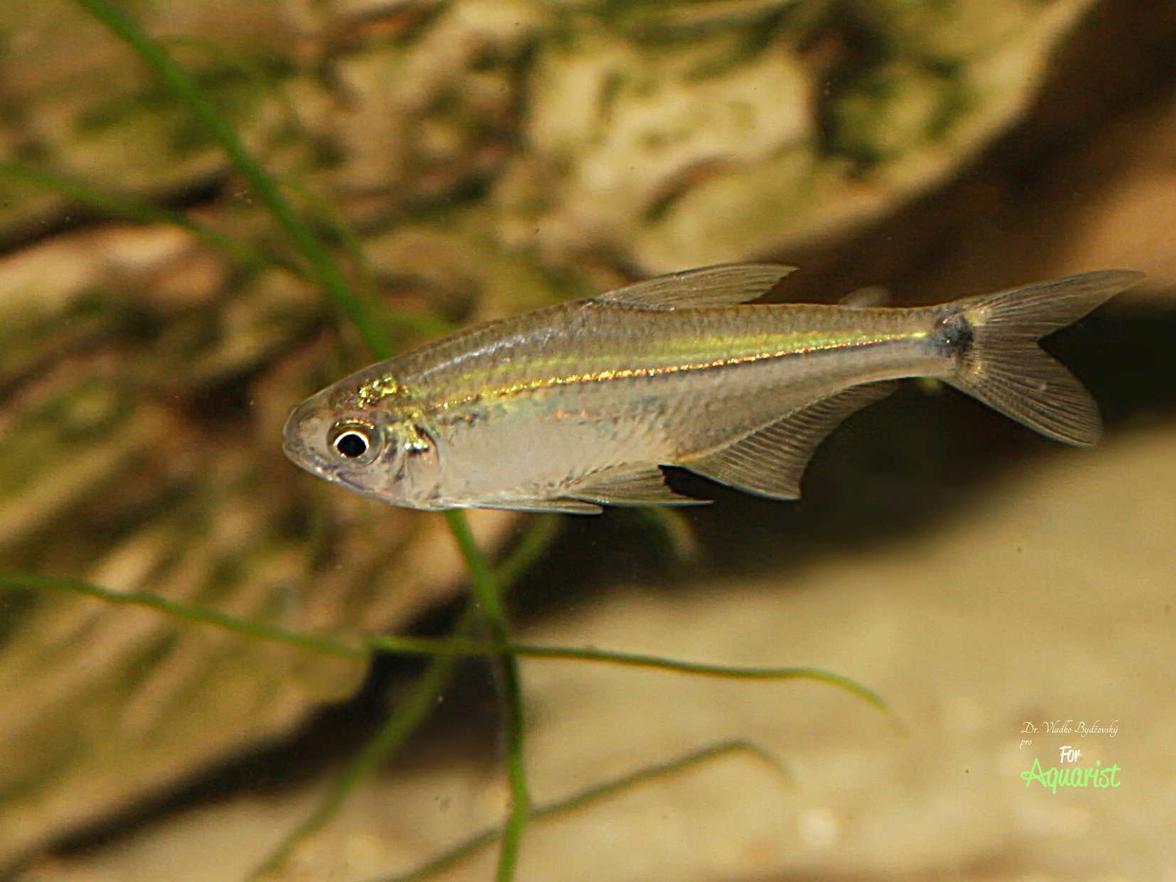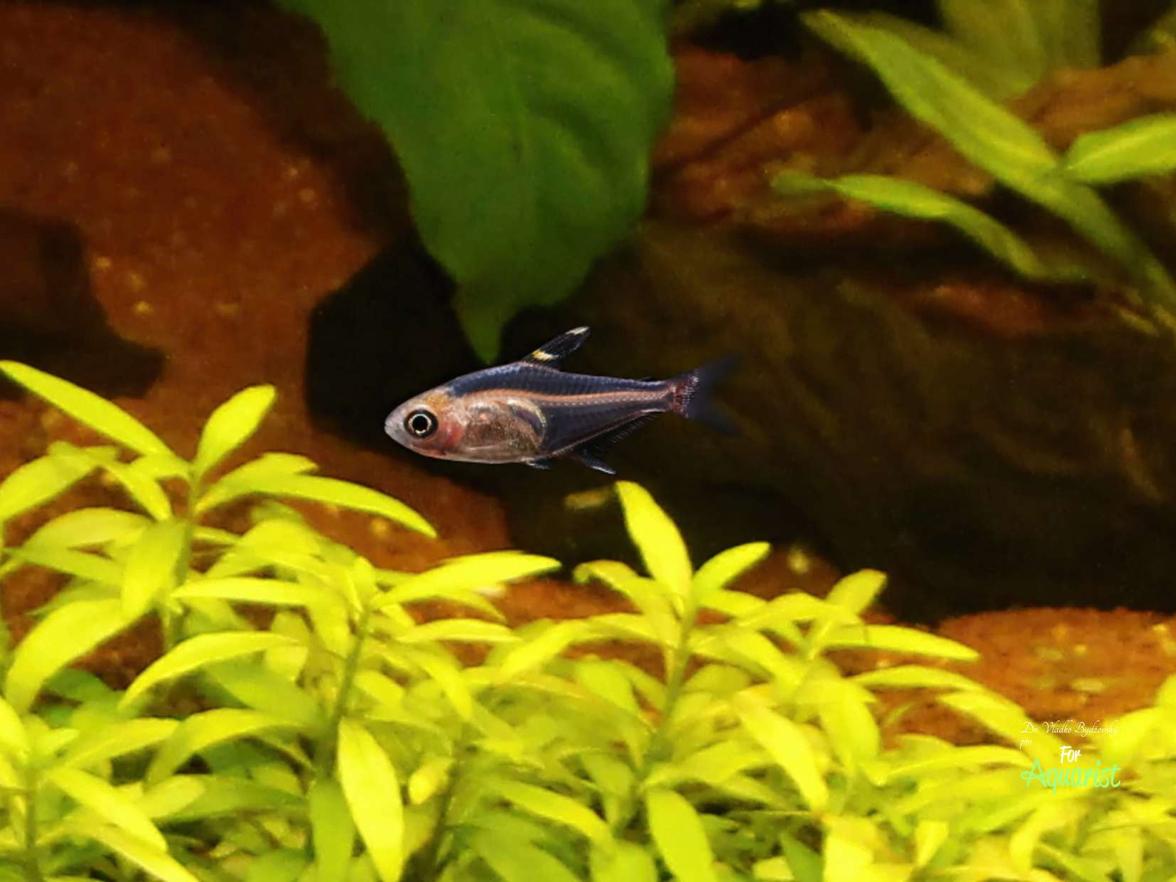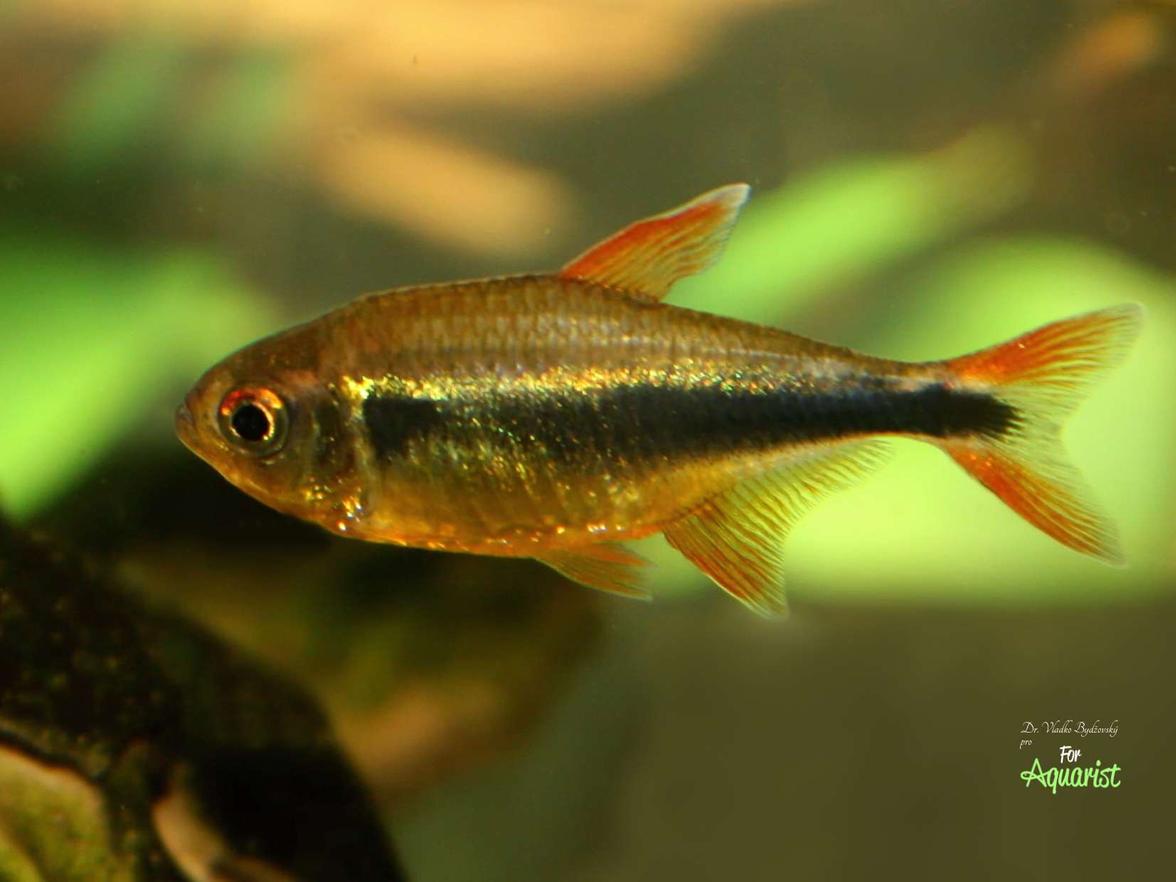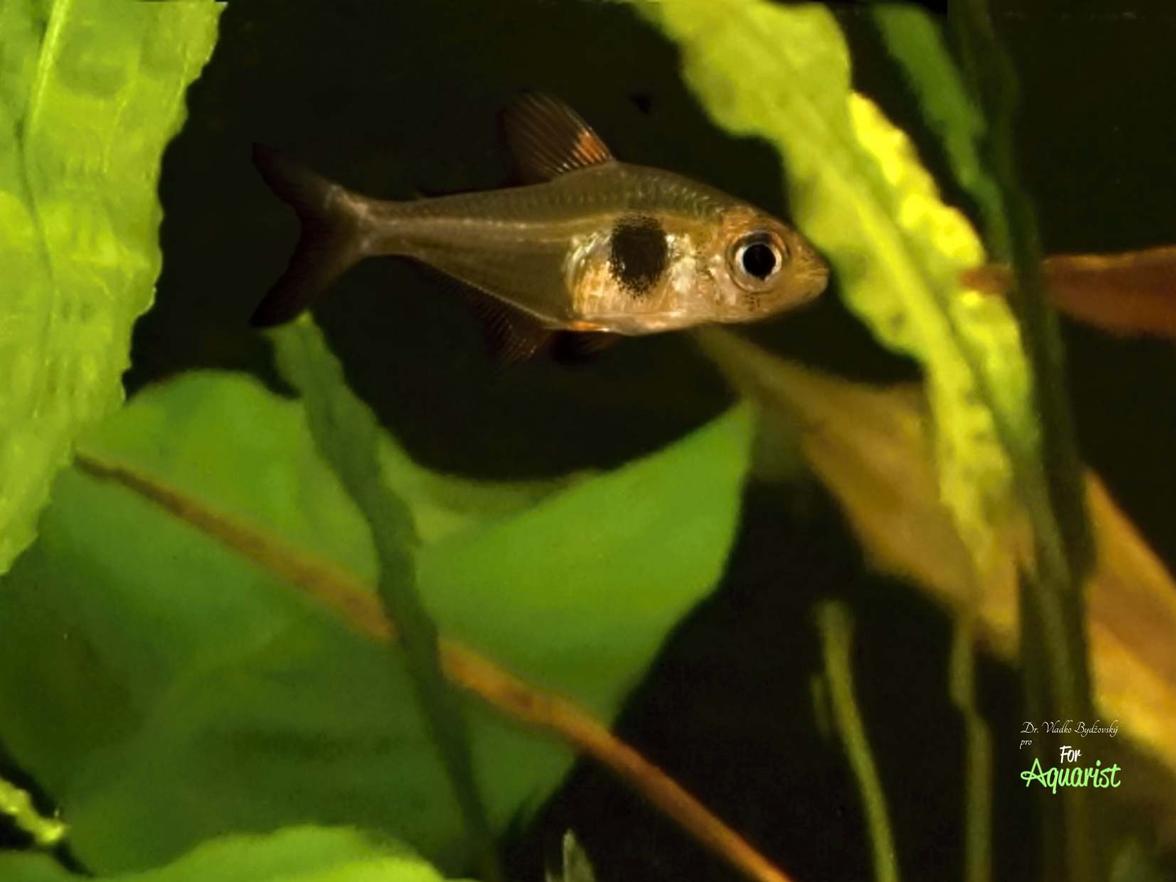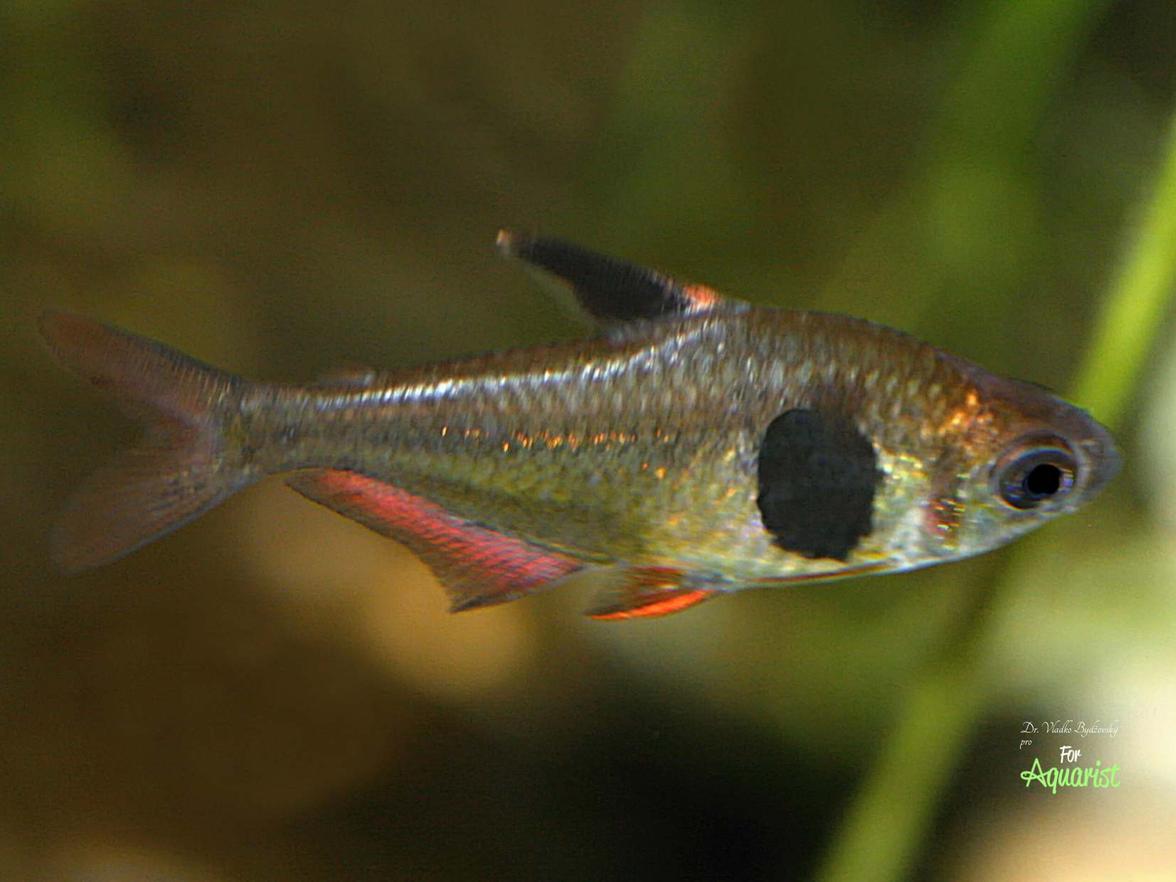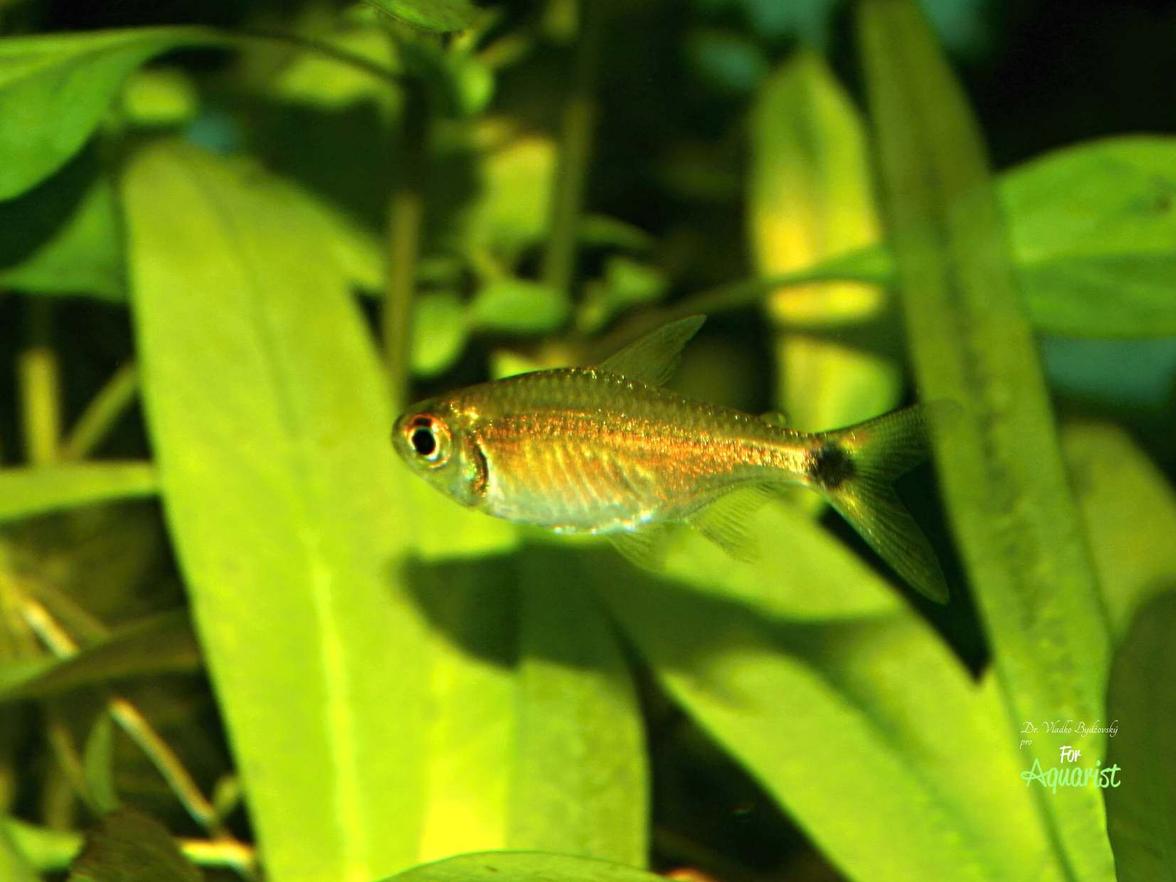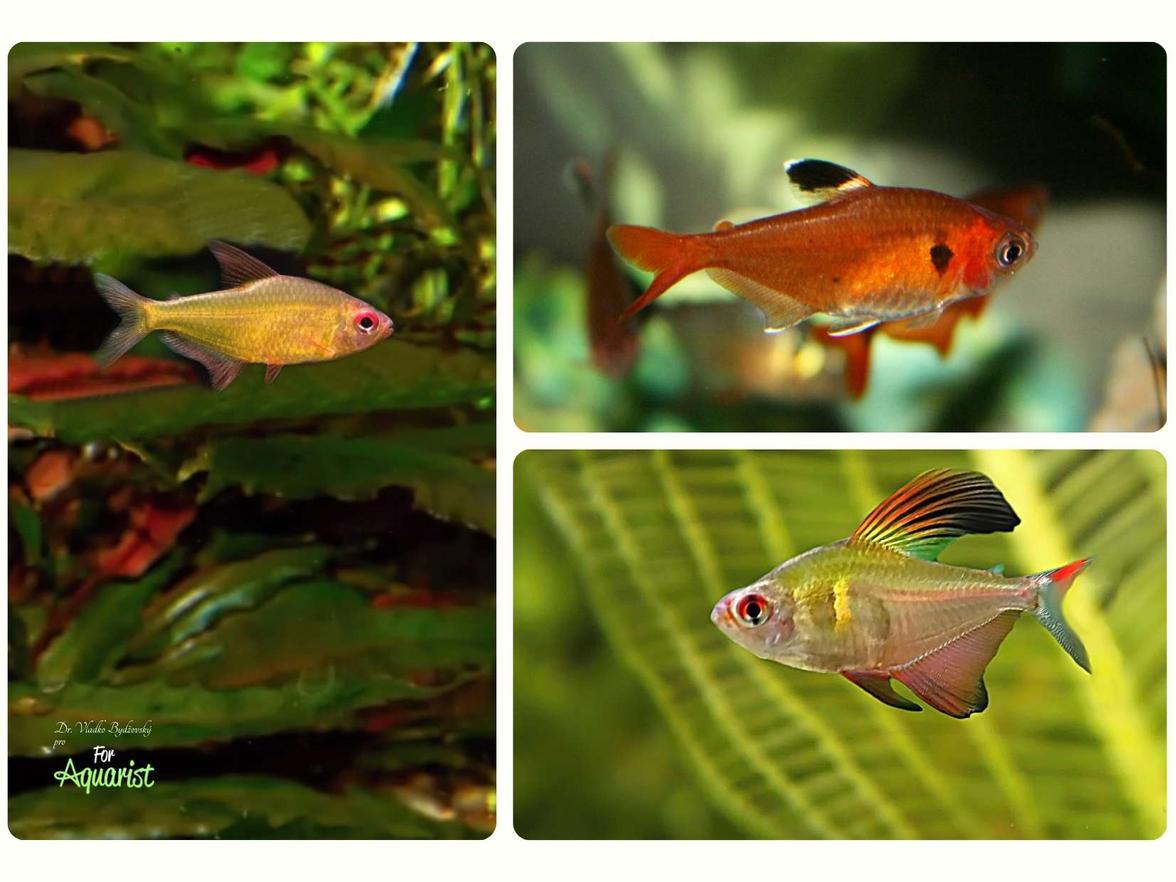Let's take a look at the lesser-known but fascinating tetras of the genus Hyphessobrycon that have appeared in our aquariums by 2015. This genus, the largest in the family Characidae, includes over 130 described species and many more awaiting scientific classification. These small, peaceful fish, often with pronounced sexual dimorphism, are ideal for dimly lit aquariums with floating plants, where they feel at home. They are easy to care for, and due to their shoaling behavior, it is recommended to keep at least 6-8 individuals. Although the systematics of the genus is still evolving and names may change, today we will focus on the species that have enriched our aquariums in recent years.
In this first part, we'll focus on rare and novel tetra species known to us until approximately 2015. The systematics of tetras are currently undergoing significant research by several scientific teams. While not all their findings are universally accepted, we can expect changes to established names, much like what has happened with pencilfish. For now, we'll adhere to the original classifications.
The genus Hyphessobrycon is one of the most popular genera of aquarium fish, found from southern Mexico down to the Rio de la Plata in Argentina. The Amazon basin boasts the greatest diversity, housing roughly half of the known species. It is the largest genus within the Characidae family.
Established in 1908 by Durbin, the genus Hyphessobrycon now comprises over 130 species. Many remain scientifically undescribed and are often referred to as Hyphessobrycon sp. with an attribute indicating their collection location. Over the past decade, numerous new species have been described, many of which are still largely unknown in the hobby. However, several have already been introduced online. These are generally small, social, and peaceful fish. This genus is closely related to another popular tetra genus, Hemigrammus.
The primary distinctions between Hyphessobrycon and Hemigrammus lie in their dentition and the absence of a notched caudal fin base in Hyphessobrycon species. Both genera include representatives with both elongated and high-bodied forms. Similar to cichlids, many Hyphessobrycon species exhibit distinct sexual dimorphism: males are typically more colorful with elongated fins, while females are usually paler and less vividly colored. These fish commonly inhabit shaded, forested waters. Therefore, it's best to keep them in dimly lit aquariums with floating plants providing natural cover. They generally thrive and breed successfully in captivity. As they are typically shoaling fish, always acquire them in groups of at least 6-8 individuals.
In this article, we aim to introduce some of the lesser-known Hyphessobrycon species.
Understanding Hyphessobrycon Systematics
The current systematics of the genus Hyphessobrycon are somewhat superficial and do not yet fully utilize phylogenetic analyses. Instead, species are primarily classified based on relatively simple characteristics. Several attempts have been made to group certain species, often based on coloration and fin shapes (e.g., Géry 1961, 1966, 1977; Weitzman and Palmer 1997).
For instance, the "Rosy Tetras" group includes high-bodied tetras such as Hyphessobrycon erythrostigma, Hyphessobrycon socolofi, Hyphessobrycon pyrrhonotus, Hyphessobrycon eques (formerly Hyphessobrycon callistus), the phantom tetras, Hyphessobrycon rosaceus, and Hyphessobrycon bentosi, among others. Another group, Hyphessobrycon heterohabdus, encompasses 3-15 species, depending on the author. This group includes H. heterohabdus itself, Hyphessobrycon amapaensis, and Hyphessobrycon agulha (though some authors consider H. agulha a separate group). New species are continually being added as they are discovered and described. Some are designated as Hyphessobrycon cf. … or Hyphessobrycon sp. aff. …, meaning they are similar to an original species but are still scientifically undetermined. An example of a recent novelty is Hyphessobrycon eschwartzae, discovered by a group of ichthyologists (Garcia-Alzate, Román-Valencia, Ortega) in the southeastern Peruvian region of Madre de Dios, alongside Hyphessobrycon taphorni. However, H. eschwartzae is currently only known from preserved specimens and resembles Hyphessobrycon loretoensis.
Featured Hyphessobrycon Species (in order of pictures)
Here are some of the lesser-known Hyphessobrycon species:
-
Hyphessobrycon borealis: Originating from French Guiana, this smaller fish typically reaches just under 3 cm. It belongs to the Hyphessobrycon heterohabdus group, which also includes H. heterohabdus, H. amapaensis, H. agulha, and H. eschwartzae.
-
Hyphessobrycon cf. pulchripinnis: This novelty, which appeared some time ago through the company Glaser, differs from the original "Rakušanka" primarily in its reddish coloration. An interesting albino form of this species, originally from central Brazil's Rio Tapajos basin, has also emerged.
-
Hyphessobrycon cf. elegans: This species currently retains its trade name.
-
Hyphessobrycon coelestinus: Another small representative, reaching approximately 3 cm, this cheerful tetra from the upper Rio Paraná is quite rare in aquariums.
-
Hyphessobrycon copelandi: A relatively rare tetra, males reach 35 mm, while females are a few millimeters longer and more robust. It originates from the Solimões, Approuague, and Mana rivers.
-
Hyphessobrycon epicharis: Males reach about 3.5 cm, females around 4 cm. Originating from the upper Orinoco and upper Rio Negro basins, these beautiful but somewhat shy tetras are extremely rare and relatively expensive in Europe.
-
Hyphessobrycon eschwartzae: Part of the Hyphessobrycon heterohabdus group, it was described simultaneously with another dwarf, Hyphessobrycon taphorni (23 mm). Its name honors artist Eugenie Schwartz, who financially supported its research. It originates from the Peruvian Rio Madre de Dios and is sometimes seen in Germany as Hyphessobrycon sp. agulha.
-
Hyphessobrycon haraldschultzi: Found in the Rio Araguaia basin of central Brazil, including the Rio Aqua Preta (a tributary of the well-known Rio das Mortes, home to Hyphessobrycon amandae). Males reach around 3 cm, females about 0.5 cm longer. It's also seen in German stores under the designation H. sp. Araguaia.
-
Hyphessobrycon heliacus: This species previously appeared in Czech aquariums but, for unknown reasons, hasn't established itself well. It primarily originates from the Rio Xingú basin, but also from the Rio Teles Pires and other small streams in the Rio Tapajos basin.
-
Hyphessobrycon herbertaxelrodi: The black neon tetra, once a popular, social, and peaceful aquarium fish, has become less common. The Hyphessobrycon cf. herbertaxelrodi seen in Europe since the late last century was caught in the upper Rio Guaporé on the Brazil-Bolivia border.
-
Hyphessobrycon heterohabdus: This species has several color variants, leading to occasional confusion with the black neon (Hyphessobrycon herbertaxelrodi). It's not easy to breed and has been overshadowed by Hyphessobrycon amapaensis in recent years, with which it is often confused. The picture shows the common form kept in aquariums in the 1990s, with a newer "Pantanal" variant below.
-
Hyphessobrycon loretoensis: This species has not yet been successfully bred in captivity (i.e., proven), despite some internet references suggesting it's simple. As its name indicates, it originates from the Loreto province in Peru.
-
Hyphessobrycon minor: Often confused with the blood tetra, which is now Hyphessobrycon eques (formerly Hyphessobrycon callistus or Hyphessobrycon minor). This tetra, native to Guyana, is among the smaller species, reaching 3-3.5 cm.
-
Hyphessobrycon montagi: A relatively new and "hot" novelty, originating from the Rio Arapiuns, Rio Tapajos, in the Brazilian state of Pará.
-
Hyphessobrycon paepkei: A relatively newly described novelty that is still rare for us. It is another representative of the "rose tetras."
-
Hyphessobrycon pando: Appeared in aquariums in 2014 thanks to the company Glaser. It's also a "Rosy tetra" from blackwater environments (male pictured). The female originates from a catch in northern Bolivia.
-
Hyphessobrycon rosaceus: Still offered in stores as Hyphessobrycon ornatus or even Hyphessobrycon bentosi. This species is characterized by white fin edging, while Hyphessobrycon bentosi has black fins.
-
Hyphessobrycon sovichthys: Identified with the help of Hans-Georg Evers, it originates from the Llanos in Venezuela and Colombia and grows to 3 cm.
-
Hyphessobrycon sp. ROSE: One of the newly classified "Rosy tetra" dwarfs. I have not yet seen it in our aquariums.
-
Hyphessobrycon sp. aff. tukano: A currently unclassified novelty that is quite undemanding and suitable even for nano aquariums. Males are particularly active and beautifully colored during spawning.
-
Hyphessobrycon takasei AMAPA: Reached us in recent months thanks to GLASER/RODGA from the Brazilian state of Amapá.
-
Hyphessobrycon takasei (usual form): Imported from French Guiana, from the Araguari and Oyapock river basins. It grows to 3 cm and was previously bred in České Budějovice.
-
Hyphessobrycon tropis: Already a fairly well-known tetra, most often arriving as an addition to fish from the Rio Negro, frequently with red neon tetras. It's easy to keep, cheerful, and small.
Read also the second part of the article Rare Hyphessobrycon from 2015
